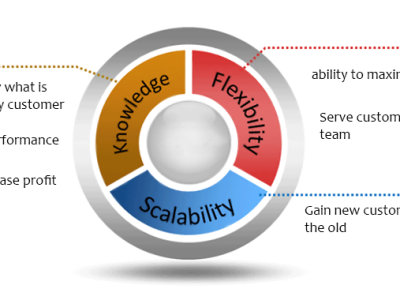
Vision Pharma CRM Analytics
Vision Pharma CRM allows CRM pharma companies to effectively divide up doctors into profitable vs. unprofitable segments. Zeithaml (Zeithaml, 2001) developed the customer pyramid to show how a major CRM pharma company segmented customers (physicians) into platinum, gold, iron and lead segments by “viewing physicians as long-term strategic assets” and thereafter targeted them based on potential profitability across the company’s drug portfolio (rather than on current sales within a single therapeutic category) (Zeithaml 2001).
Sign up to get FREE CRM Trial
Segmenting physicians according to their profitability requires a drug company to consolidate physician databases across business units. The CRM pharma companies used the following inputs for their “physician profitability analysis”:
- the volume of prescriptions a particular physician generated (via IMS Health data);
- the value of prescriptions;
- the cost of a sales call;
- the cost of product samples;
- product gross margins, rebates and discounts (Zeithaml 2001).
Eight total in-person and telephone interviews were conducted with managers and executives at medium to large-scale CRM pharma companies. They were recruited via industry contacts, followed up by written agreements between the researcher and manager not to mention the company name or the exact title of the pharmaceutical manager.
The focus of the interviews with the pharmaceutical managers was to learn the overall company/industry objectives of the CRM and SFA programs. Responses ranged from comments such as this one, from an executive, “That’s simple, our goals are to increase sales” to a lower-level manager, who explained in detail his efforts to further develop a repository of medical study articles that would eventually be served up to the relevant physicians.
Once the pharmaceutical management interviews were conducted, the researcher developed the physician discussion guide. Pediatricians were recruited via personal interactions at two national pediatric conferences. Due to the fact that the research was academic, not commercial, pediatricians were open to being contacted later for a telephone interview. Although the physician sample was small – 35 total – it included a national representation of private-practice, research and HMO pediatricians.
Analysis
Respondents were promised that their name and affiliation would be withheld from the final report. The interview digital .wav file was downloaded onto a computer and transcribed into a Word document. Pseudo first names were randomly selected for all participants. The researcher used ATLASti software for the thematic analysis of the CRM pharma company interview data. The researcher developed over 50 codes, which were then assigned to the CRM pharma company interview transcripts. The codes were then grouped into families or themes.
For the physician interviews, the researcher used SPSS software to conduct the analysis. Since SPSS allows for up to 250 characters in a quote, the researcher was able to create “quote” variables in SPSS. The researcher then used SPSS to sort and group the quotes according to various demographic and psychographic variables.
The majority of “perceived impacts” of CRM pharma company CRM programs were either neutral or negative, although pediatricians did mention some positive impacts. The points below summarize the pediatricians’ perceived impacts of CRM programs.
Manipulative and pushy
CRM allow pharmaceutical marketing and sales people to perform more aggressive and standardized marketing campaigns. From the pediatricians’ perspective, more aggressive marketing and sales is often seen as manipulative and pushy behavior.
This research concludes that the majority of interviewed pediatricians had a healthy distrust of CRM pharma companies. While most pediatricians were not highly aware of the variety of CRM programs targeted at physicians, when they were made aware of the programs and their intended impact on physicians, the level of trust in CRM pharma companies decreased.
The research also points to the conclusion that the majority of pediatricians do not trust the data in medical studies and papers provided by CRM pharma companies. SFA and CRM programs allow drug representatives to deliver canned and company-approved research reports. The majority of pediatricians interviewed expressed concern that CRM pharma research data does not include any negative findings; some even suggested studies that are showing negative results are stopped before completion.
Elizabeth, a young academic research pediatrician, accurately described the reasoning behind much of the lack of trust in CRM pharma company research: “With regard to the research piece, I think the biggest problem is when there is a research project and the CRM pharma company has control of the data and they have control of the manuscript. Since they have a vested interest in the financial outcome, it could influence the way the data is interpreted or presented. That, to me, drives the problem with trust.”
Little knowledge
Pediatricians don’t trust that the average drug representative is knowledgeable about the products. With SFA-based “canned presentations,” the drug representative is thought to have little knowledge beyond what they’ve been “trained to say.” Furthermore, SFA-based systems set quotas for samples, visits and prescriptions, leading the average sales representative to become pushy and aggressive in getting physicians to prescribe their drugs so they can “meet their sales quotas” and make their much needed commissions.
One pediatrician said: “Drugs are the same product like a car or anything. Working on commission certainly creates problematic conflicts at times. When you’re buying a car, at least you’re buying it for yourself. When you buy a drug, or you prescribe a drug, it’s not for yourself, it’s used by someone else. If there are inappropriate incentives or pressure, it takes it to a different philosophical level.”
Pediatricians with 25 years or more experience spoke of how the knowledge level of the average sales representative has declined, adding that, with fewer career drug representatives, “it is more difficult than in prior years to develop trust over time.”
All of these factors have contributed to a general decline in trust between the drug representative and the pediatrician. While CRM and SFA tools allow drug representatives to efficiently target-market, the majority of pediatricians find it offensive to be the “target” of a marketing operation, when they are simply trying to help their patients maintain their health or recover from an illness.
The doctors’ wariness makes it clear that CRM pharma companies must carefully consider how they incorporate the value-adding concepts mentioned by pediatricians into their customer relationship management programs. But one promising course of action would be to develop and publicize CRM and SFA programs that focus on the stated needs of the pediatric community, namely:
- publish transparent unbiased medical study and drug information;
- fund unrestricted medical education and research grants; and
- educate physicians about drug representatives’ use of SFA tools (the majority of physicians said they would like to be able to view their own prescription history; this information resides in the typical SFA system).



